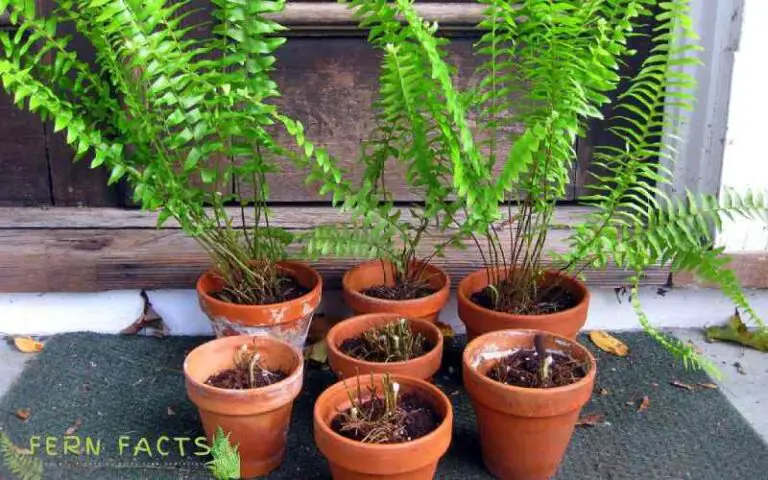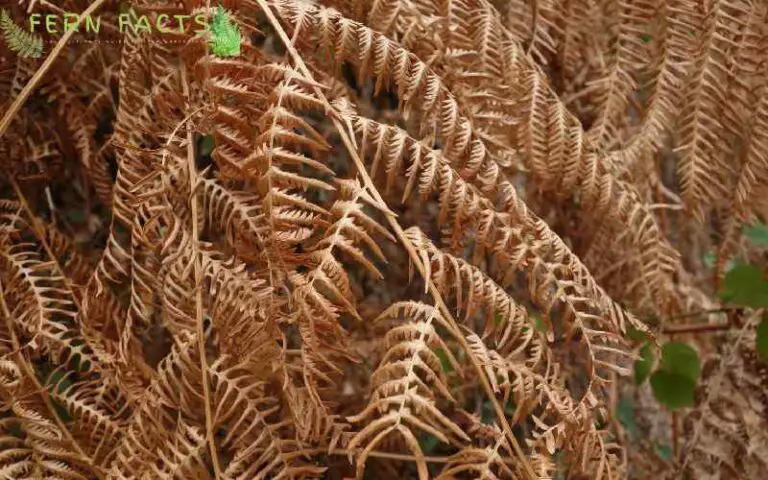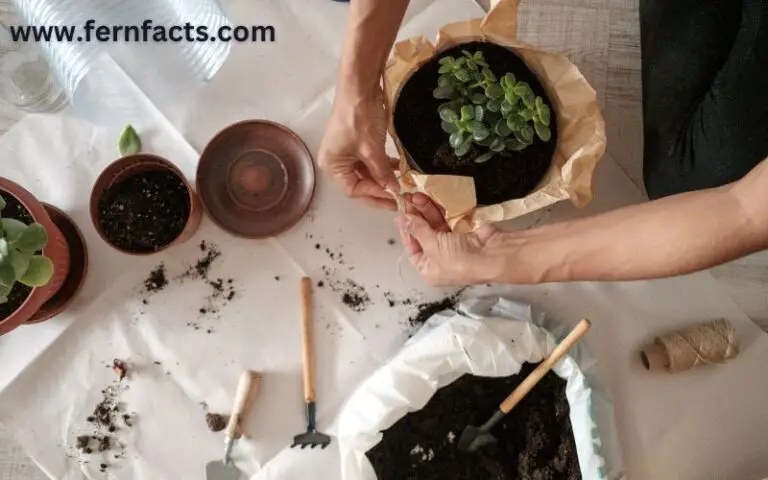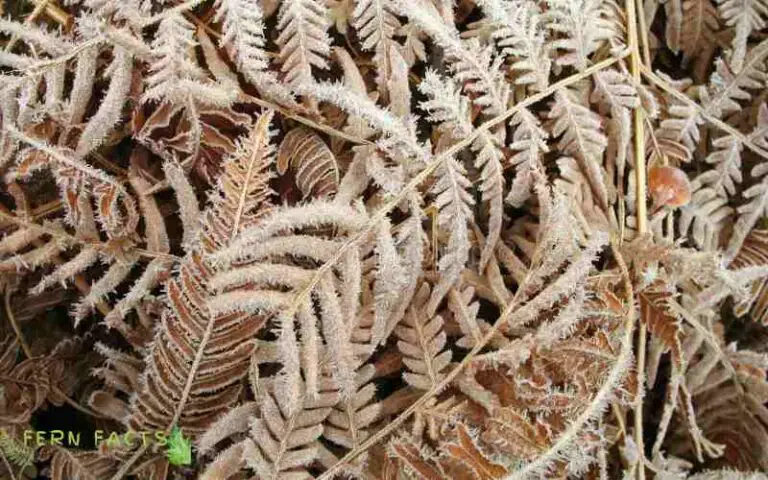Which Ferns Don’t Spread?
Fern species are one the maintenance plants and most demanding ancient plants that have survived through the past decades.
If you are a beginner-level gardener or don’t want to give much time to gardening, you still want to have a little garden corner in your room, so this article is for you.
Without giving a good deal of time, you can grow fern plants in your garden, pot, or any container.
However, you need to choose the correct varieties of fern plants that will maintain your garden’s beauty and greenery without losing much energy on them.
That is why, in this article, I will give you a list of non-spreading ferns for your garden and discuss the benefits of having non-spreading ferns in your garden.
Additionally, I will provide my personal experiences, struggles, and learning while growing ferns in my garden which will be an eye-opener for you so that you can understand what you should do and not do in order to cherish your garden.
Ferns That Don’t Spread: Options and Characteristics
Fern has different characteristics regarding their varieties and individual species. Some species are evergreen and some are deciduous plants.
Similarly, some have low growth, nonspreading and some have excessive high growth while spreading their spores. Let’s see a few non-spreading ferns which will be best for your garden.
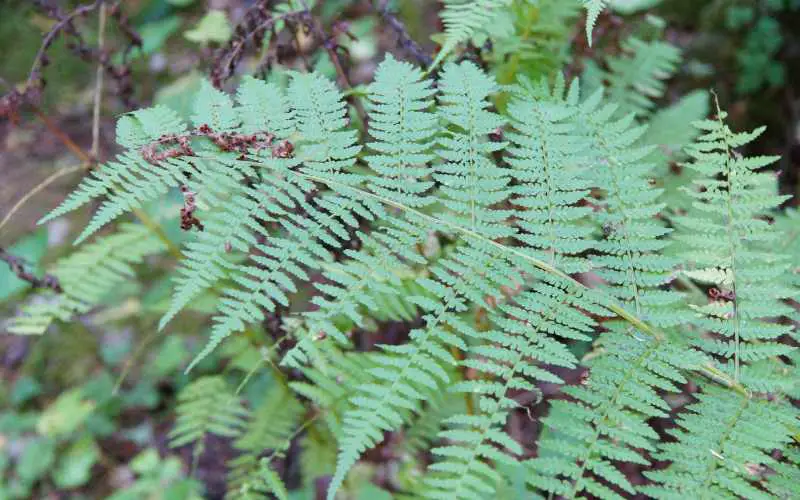
1. Male Fern
- Botanical name: Dryopteris filix-mas
- Plants : Deciduous plants
- Native range: Europe, North America, and Asia
- Natural habitats: Woodlands, hedges of the banks, rocks, screes
- Shade requirements: Need partial or full shade
- Height: up to 1.5 m
- Soil: acid, neutral or alkaline. moist, poor drainage tolerated
Male ferns are the common fern, bigger and stronger ferns that are highly visible in the northern hemisphere continents. In ancient literature, this fern is referred to as a worm fern.
This fern is also used as a medicine in traditional times as it can kill tapeworms. Therefore, you need to be very careful that you do not put the fern or taste the fern because it can cause you death.
2. King Fern
- Botanical name: Angiopteris evecta
- Plants: Semi-evergreen
- Native range: Southeast Asia, Oceania, Sri Lanka, Bangladesh, Japan, and Australia
- Natural habitats: rainforests, wet climates
- Shade requirements: Shade, partial or full sun
- Height: up to 1.5 m
- Soil: acid, neutral or alkaline. moist, well-drained.
King fern, also known as elephant fern, giant fern, vessel fern, or Madagascar tree fern in different countries.
You will be surprised that this fern has been around for about 300 million years and also it’s believed to have the longest fronds among other ferns in the world.
These King ferns, fronds, or leaves are also used as a medicine to cure cough. Especially in Thailand, the roots are also being used as a medicine to stop bleeding after a miscarriage.
3. Sunset Fern
- Botanical name: Dryopteris lepidopoda
- Plants : semi-evergreen
- Native range: Himalayas, China, Taiwan, and Myanmar
- Natural habitat: shady forests of coniferous
- Shade requirements: full or partial shade
- Height: around 1 meter
- Soil: acidic or neutral, moist well drained
Sunset ferns are one of the genus of Dryopteris which has a slightly orange-red color when it starts to bloom.
As this fern is a semi-evergreen fern, it will lose its fronds in the middle or in the late winter. Because of its vibrant coloration, it will give your garden a well-coordinated look with other green plants.
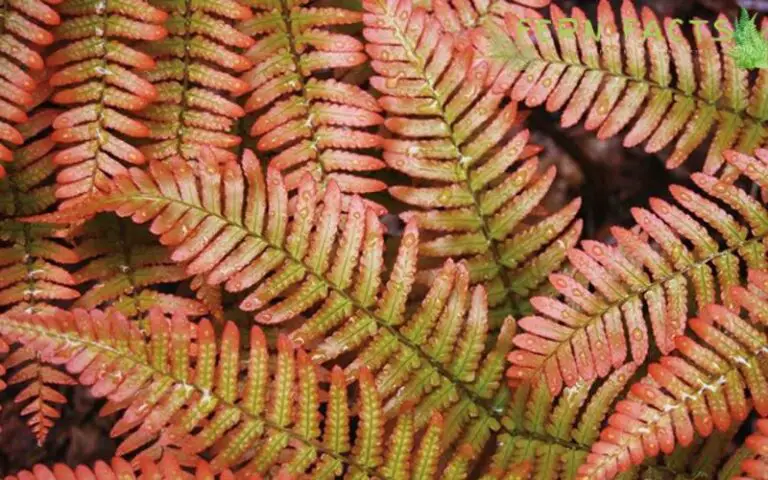
4. Autumn Fern
- Botanical name: Dryopteris erythrosora
- Plants: Semi-evergreen
- Native range: Asia, Japan, China, and the Philippines
- Natural Habitats: Woodlands, low mountains
- Shade requirements: full or partial, adaptable under full sun
- Height: around 1 meter
- Soil: tolerance of pH level of the soil with drainage system
Autumn ferns are also known as Japanese shield ferns. When this plant is young, it has coppery red fronds and later it becomes green after it becomes fully grown.
While growing these plants, you need to be careful because these ferns cannot tolerate standing water. Too much water can make your plants die.
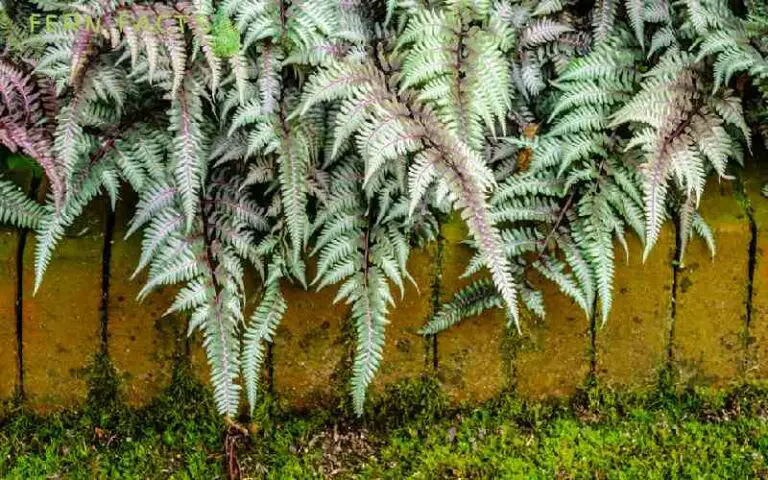
5. Japanese Painted Fern
- Botanical name: Athyrium niponicum
- Plants: Deciduous
- Native range: eastern Asia, China, Japan, and Korea
- Natural Habitats: lowlands
- Shade requirements: partial shade
- Height: around 0.5 meter
- Soil: acid, neutral, alkaline, moist and well drained
Japanese-painted ferns are also low-spreading ferns. These ferns’ fronds shape could have variables however it is between 30 to 75 cm long.
As it has unique fronds, their fronds color is often a mixture of silver, green, or purple which look stunning in the bright light or sun rays. It more or less gives a metallic shine.
6. Christmas Fern
- Botanical name: Polystichum acrostichoides
- Plants: evergreen
- Native range: North America, Nova Scotia, Florida, and Texas
- Natural Habitats: woodlands, rocky slopes, steam banks
- Shade requirements: partial shade or indirect sunlight
- Height: around 1 meter
- Soil: neutral or alkaline, moist and well drainage system
Christmas ferns are one of the non-spreading ferns which are fond of shady habitats. These ferns are also leather ferns that give glossy, green fronds over the year.
It’s a very adaptable fern for cultivation in the yard or in the natural park or gardens. As these are evergreen plants, sometimes it is used as a winter-oriented garden design.
7. Oriental Chain Fern
- Botanical name: Woodwardia orientalis
- Plants: evergreen
- Native range: Asia, Japan, China Philippines, Taiwan
- Natural Habitats: hillsides
- Shade requirements: partial shade under indirect sunlight light
- Height: up to 1.5 meter
- Soil: acid or neutral, moist, and poor drainage tolerance
Oriental chain ferns are also large ferns with slow-spreading or non-spreading habits. These are also very adaptable ferns for your gardens or yard because these plants have an arching growth habit.
Similarly, they need a good drainage system with a balanced soil texture.
Benefits of Choosing Ferns That Don’t Spread
Fern that doest spread by their spores has sort of benefits for you If you are a beginner level of gardener.
Basically, Fern is a collective form of vascular plant that does not have any seeds or flowers on them, rather their reproduction depends on the spores.
Their new birth plants because of the spreading of spores. Most fern plants grow in that spores-spreading way. However, some species or varieties of these fern plants don’t spread.
Planting this fern will give you plenty of benefits because these fern plants will require low maintenance. Plants that constantly grow by spreading will need a lot of maintenance and grooming.
Because those plants need regular basis pruning, cutting, and balanced fertilizer. But in this state, all these ferns are low maintenance, you don’t have to regularly prune them or cut off their fronds and weeds to keep your plants well structured and your garden clean.
Few spreading fern has immense growth they spread their spores aggressively. So, you might find it difficult to maintain those ferns.
But in a non-spreading fern case, your work will be less and easier as this fern will need less care and maintenance which can save you time and energy; also will be a beginner-friendly plant for your garden.
They will require less watering and fertilizer compared to other spreading ferns. You can easily do their soil mixing once or twice a year.
Even, they are adaptive plants so they can have a tolerance level of maintaining themselves. You just need to keep their soil well hydrated or moist so that they can get enough hydration through their soil.
Moreover, this fern also has limited growth in your garden opposite to other vast-growth fern plants. Thus, it will not contain so much space by spreading all over your garden.
You can also maintain these plants both indoors and outdoors while enjoying their view.
Personal Experience: My Struggle With Spreading Ferns
I have already shown you the benefits or advantages of non-spreading ferns because I have faced a lot of challenges while growing and spreading Ferns in my garden.
Growing some fern without proper comprehensive knowledge and learning gave me frustration in the past. Because I was a beginner-level gardener, I didn’t have any idea about the proper maintenance and grooming system of these spreading ferns.
The lack of guidelines lead me to a messy situation while maintaining my garden ferns. Because the level of their spreading ability covered my whole garden and required all the places.
Because if the new spores get ideal conditions with a good fertilized soil mixture, they will germinate their new spores there. And so, it will start growing individually while giving birth to new plants.
This type of spreading ferns will be the best and most eco-friendly for any forest environment or any nature adventure place for people to observe and gain knowledge about these ferns.
But for your mini garden, these plants will not be the best option. This creates an abundance of Fern plants in my garden which later became a messy situation for me to clean my garden.
The probable solution for reducing their growth is to dig out their new spores immediately after they fall on the ground. Thus, these plants require everyday inspection to observe and control any of their new growth.
As a consequence, it consumes lots of time and energy. That is why, if you are a beginner level gardener or you want a small garden just for yourselves then non-spreading ferns will be the best option for your garden.
It will gradually make your gardens more nourishing and stunning by its different foliage.
Takeaway: The Beauty and Convenience of Non-spreading Ferns
To wrap it all up, choosing the correct fern plants for your garden will nourish your gardens and their look through different vegetation. All the above-mentioned non-spreading ferns, you can choose for your garden if you want a hassle-free and low-maintenance garden for yourselves.
As they have a lot of advantages, you can easily grip your garden without having much experience.
Therefore, you can give them a balanced atmosphere and humid conditions by understanding their different characteristics, requirements, and adaptability that will help your plants to thrive.
In short, you can easily maintain these non-spreading ferns by following simple guidelines without any hassle and gardening experiences.
And so, it will give you a beautiful enchanted garden which will be your comfort zone that will keep you closer to nature.


